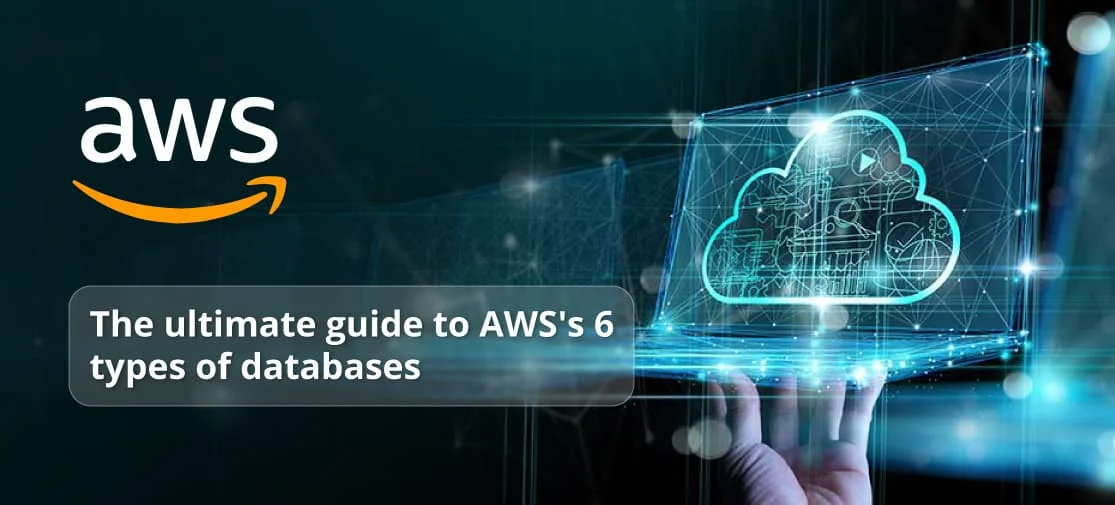Introduction
Understanding the basics of aws load balancer
In today's data-driven world, selecting the right database is crucial for the success of your applications. AWS offers a range of database services tailored to different needs and workloads. In this guide, we'll dive into the six types of AWS databases, their features, and how to choose the right one for your project.
Amazon relational database service (rds)
Amazon Aurora
Amazon Aurora is a MySQL and PostgreSQL-compatible relational database known for its high performance and availability. It combines the speed and reliability of high-end commercial databases with the simplicity and cost-effectiveness of open-source databases.
MySQL
MySQL is one of the most popular open-source relational databases. RDS supports MySQL, making it easy to migrate existing MySQL databases to AWS.
PostgreSQL
PostgreSQL is a powerful, open-source object-relational database system. It supports advanced data types and performance optimization features, making it a robust choice for complex applications.
MariaDB
MariaDB, a fork of MySQL, offers additional features and improvements. It is compatible with MySQL, allowing for easy migration and usage within RDS.
Oracle
Oracle Database is known for its advanced features and capabilities. RDS supports Oracle, providing enterprises with a managed solution for running Oracle workloads in the cloud.
SQL Server
Microsoft SQL Server is a relational database management system known for its enterprise-grade features. RDS supports SQL Server, enabling seamless integration with other Microsoft services.
IBM Db2
IBM Db2 Server in Amazon RDS is a fully managed relational database service provided by AWS, allowing you to deploy and manage IBM Db2 databases in the cloud without the need to manage the underlying infrastructure.
Key Features of RDS
- Automated backups
- Multi-AZ deployment
- Read replicas
- Automated patching and updates
- Monitoring and metrics
Use Cases for RDS
- E-commerce applications
- Web and mobile applications
- Data warehousing
- ERP and CRM systems
Amazon DynamoDB
Overview of DynamoDB
Amazon DynamoDB is a fully managed NoSQL database service that provides fast and predictable performance with seamless scalability. It is designed to handle large-scale, high-traffic applications.
Key Features of DynamoDB
- Single-digit millisecond response times
- Built-in security, backup, and restore
- Fully managed, serverless architecture
- On-demand and provisioned capacity modes
Use Cases for DynamoDB
- Real-time bidding platforms
- Gaming leaderboards
- IoT applications
- Mobile and web applications
Amazon redshift
Overview of Redshift
Amazon Redshift is a fast, fully managed data warehouse that makes it simple and cost-effective to analyze all your data using standard SQL and existing Business Intelligence (BI) tools.
Key Features of Redshift
- Columnar storage for high performance
- Massively parallel processing (MPP)
- Advanced compression
- Integration with AWS services
Use Cases for Redshift
- Business intelligence and reporting
- Data warehousing
- Big data analytics
Amazon elastiCache
Overview of ElastiCache
Amazon ElastiCache is a fully managed in-memory data store and cache service. It is designed to accelerate the performance of your applications by allowing you to retrieve data from high throughput and low latency in-memory data stores.
Redis vs. Memcached
ElastiCache supports two open-source in-memory caching engines:
- Redis: Advanced data structures, persistence, and replication.
- Memcached: Simpler caching needs with multi-threaded architecture.
Key Features of ElastiCache
- Sub-millisecond response times
- High availability with automatic failover
- Data partitioning for scalability
- Fully managed and secure
Use Cases for ElastiCache
- Caching frequently accessed data
- Real-time analytics
- Session management
- Leaderboards and gaming data
Amazon Neptune
Overview of Neptune
Amazon Neptune is a fast, reliable, fully managed graph database service that makes it easy to build and run applications that work with highly connected datasets.
Key Features of Neptune
- Support for popular graph models: Property Graph and RDF
- ACID transactions for data integrity
- High availability with read replicas
- Fully managed and secure
Use Cases for Neptune
- Social networking applications
- Fraud detection
- Knowledge graphs
- Recommendation engines
Amazon DocumentDB
Overview of DocumentDB
Amazon DocumentDB (with MongoDB compatibility) is a scalable, fully managed document database service that supports MongoDB workloads. It is designed to work with JSON data and scale seamlessly.
Key Features of DocumentDB
- MongoDB compatibility
- Fully managed and scalable
- High availability with replication
- Security and compliance
Use Cases for DocumentDB
- Content management systems
- User profiles and data
- Catalogs and inventories
- Mobile and web applications
Comparing aws database services
Performance and Scalability
Each AWS database service is designed to handle specific workloads efficiently. RDS is great for transactional workloads, DynamoDB for high-speed NoSQL operations, Redshift for large-scale data analytics, ElastiCache for in-memory data caching, Neptune for graph data, and DocumentDB for document-based data.
Cost Considerations
Cost varies significantly between services based on usage patterns. RDS and Redshift may have higher costs for storage and compute, while DynamoDB offers flexible pricing models. ElastiCache and Neptune's costs depend on node types and instances.
Ease of Management
AWS databases are fully managed, reducing the administrative burden. However, some services, like RDS, require more configuration compared to serverless options like DynamoDB.
Security Features
AWS provides robust security features across all database services, including encryption at rest and in transit, VPC isolation, IAM roles, and integration with AWS Key Management Service (KMS).
How to choose the right aws database
Assessing Your Needs
Understand your application's requirements: Do you need high availability, low latency, scalability, or specific data models? Your needs will guide your choice.
Matching Use Cases to Databases
Match your use cases to the database strengths: RDS for relational data, DynamoDB for high-speed NoSQL, Redshift for analytics, ElastiCache for caching, Neptune for graph data, and DocumentDB for JSON data.
Future-Proofing Your Choice
Consider future growth and integration needs.




